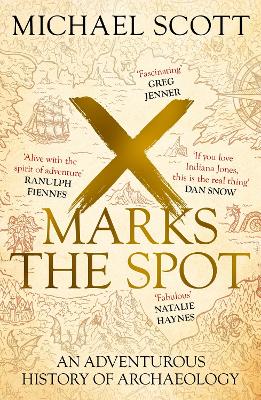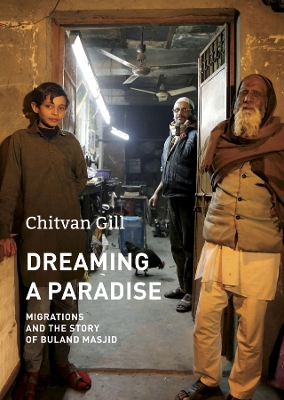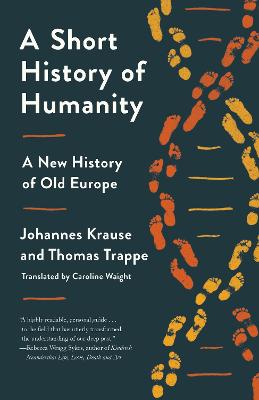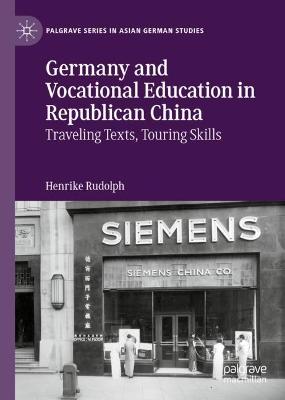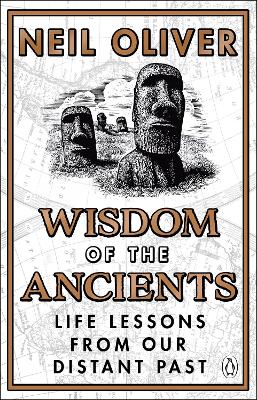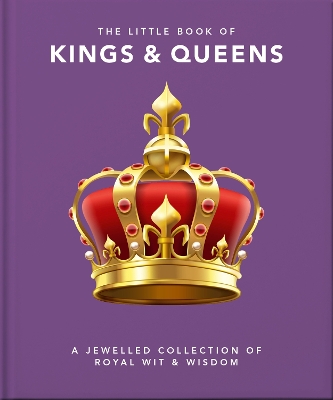Metal Road of the Eastern Eurasian Steppe
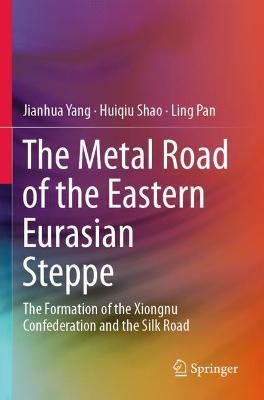 portes grátis
portes grátis
Metal Road of the Eastern Eurasian Steppe
The Formation of the Xiongnu Confederation and the Silk Road
Yang, Jianhua; Shao, Huiqiu; Pan, Ling
Springer Verlag, Singapore
08/2021
571
Mole
Inglês
9789813291577
15 a 20 dias
967
PREFACE I. The Geography of the Eurasian Steppe II. The History of Research on the Relations between the Northern Zone of China and the Eurasian Steppe III. About the Book CHAPTER ONE THE GERMINATION OF NORTHERN BRONZES 1.1 Different Bronze Systems in Eurasia 1.1.1 Eastern bronze culture system 1.1.2 Western bronze culture system 1.1.3 Bronze culture system during the late prehistoric period 1.2 Research Background beyond China Related to Chinese Early Bronzes 1.2.1 Early bronzes of the Oasis culture in southern Central Asia 1.2.2 Early bronzes of the steppe culture 1.2.3 Seriation of some early bronzes 1.3 The Formation of Different Systems of Early Chinese Bronzes 1.3.1 Central Plain bronze system during the Xia period 1.3.2 Northern bronze system during the Xia period 1.3.3 Early bronzes of the Northwestern bronze system during the Xia period 1.4 Relationship between the Early Bronzes from China and Those outside of China 1.4.1 Relationship between the bronzes of the Qijia culture and those outside of China 1.4.2 Relationship between the bronzes of the Siba culture and those of the Tianshanbeilu culture and those beyond the borders of China 1.4.3 The prototype of the Northern Zone of China-the Mongolian Plateau Metallurgical Province CHAPTER TWO THE EXPANSION OF THE STEPPE CULTURE DURING THE SECOND MILLENNIUM B.C. 2.1 Andronovo Culture and Seima-Turbino Culture 2.1.1 Andronovo culture and socketed battle axes in steppe 2.1.2 Characteristics, dating and population of the Seima-Turbino remains 2.1.3 Relationship between the two types of remains 2.2 Relevant Remains in China 2.2.1 Relevant remains of the Andronovo culture complex found in Xinjiang 2.2.2 Socketed battle axes in Xinjiang and the Northern Zone 2.2.3 Hollow-head axes in Xinjiang and the Northern Zone of China 2.2.4 Bronze spears with Seima-Turbino characteristics found in China 2.3 The Cultural Relations between China and the Steppe Zone during the 2000 B.C. 2.3.1 Expansion of the Andronovo culture complex in Xinjiang 2.3.2 The spread of socketed battle axes 2.3.3 Spread of axes 2.3.4 Seima-Turbino-type bronze spears 2.3.5 Summary CHAPTER THREE THE EMERGENCE AND EXPANSION OF BRONZES IN THE NORTHERN ZONE OF CHINA 3.1 Emergence of the Northern Bronzes 3.1.1 Northern bronzes during the early Shang period 3.1.2 Northern bronzes from the late Shang to West Zhou 3.1.3 Evolution of the major bronzes 3.2 Eurasian Steppe at the End of the 2nd Millennium B.C. 3.2.1 Kazakh steppes, East European steppe, and forest steppes in the post-Seima period 3.2.2 Early bronze artifacts in the Mongolian region 3.2.3 Karasuk culture in the Minusinsk Basin 3.3 The Spread of Chinese Northern Bronzes 3.3.1 The influence of northern bronzes on Central Plain culture 3.3.2 The influence of northern bronzes on the north of the Yan Mountains 3.3.3 The relationship between northern bronze and the Mongolian Plateau 3.3.4 The relationship between the northern bronze and Minusinsk Basin 3.3.5 The influence of the northern bronzes on the steppes beyond the border, taking the bronze short sword as an example CHAPTER FOUR THE BEGINNING OF THE EARLY NOMADIC AGE 4.1 The Beginning of the Nomadic Culture of the Eurasian Steppe 4.1.1 The northern coast of the Black Sea and the Kuban River Basin: The pre- and early Scythian cultures 4.1.2 South Siberia in Russia: the Arzhan Kurgan 4.1.3 Slab Grave culture in the Mongolian Plateau and Trans-Baikal 4.2 The Predecessor of Nomadic Civilization in the Northern Zone of China 4.2.1 Upper Xiajiadian culture 4.2.2 Kayue culture 4.3 Contact between the Northern Zone of China and the Eurasian Steppe 4.3.1 The relationship between the Upper Xiajiadian culture and the Slab Grave culture 4.3.2 Cultural interaction between the Upper Xiajiadian culture and South Siberia and the Black Sea 4.3.3 Division of the middle and eastern Eurasian Steppe and their characteristics 4.4 Conjectures of Transition from Animal Husbandry to Nomadic Pastoralism CHAPTER FIVE THE NORTHERN ZONE OF CHINA AND THE EURASIAN STEPPE IN THE EARLY IRON AGE 5.1 The Prosperous Nomadic Culture in the Eurasian Steppe 5.1.1 The Scythian culture 5.1.2 The Sauro-Sarmatian culture 5.1.3 The Saka culture 5.1.4 The Tagar culture 5.1.5 The early nomadic culture in the Tuva area 5.1.6 The early nomadic culture in the Altai region 5.1.7 The Slab Grave culture 5.2 Formation of the Northern Cultural Belt of China 5.2.1 The sites of the Di in Northern China 5.2.2 Remains related to the Hu in the Northern Zone 5.2.3 Differences between two types of sites in the Northern Zone of China during the Eastern Zhou Period 5.3 Interactions between the Northern Zone of China and the Eurasian Steppe 5.3.1 Interactions with the Mongolian Plateau and Transbaikal 5.3.2 Interactions with Minusinsk and Tuva 5.3.3 Connections with the Altai region 5.3.4 Connections with the Semirechye region in the Tianshan Mountains 5.4 Further Exploration of the Origin of the Xiongnu 5.4.1 Comparison between the earliest Xiongnu remains and the related remains of the Northern Zone of China and the Mongolian Plateau 5.4.2 Discussion CHAPTER SIX CULTURAL CONNECTIONS BETWEEN THE NORTHERN ZONE OF CHINA AND THE EURASIAN STEPPE IN THE XIONGNU TIMES 6.1 Study on the Staging of Xiongnu Remains 6.1.1 Description of related concepts 6.1.2 Staging the Xiongnu remains in Mongolia and the Transbaikal region 6.1.3 The large tombs of the Xiongnu 6.2 Sources of Xiongnu Cultural Elements and Their Communication with Surrounding Areas 6.2.1 Analysis of the cultural factors of the Xiongnu remains in the middle and late Western Han period 6.2.2 The spread of the Xiongnu culture 6.2.3 Summary of the spread of Xiongnu's cultural factors and their relationship with the surrounding ethnic groups and the subordinate countries of Xiongnu 6.3 The Transformation of Cultural Interactions between the Northern Zone of China and the Eurasian Steppe from the Late Warring States period to the Middle Western Han Period 6.3.1 Eurasian Steppe cultural features in the Northern Zone of China during the late Warring States period 6.3.2 The Eurasian Steppe cultural factors in the Northern Zone of China during the Western Han dynasty 6.3.3 The cultural factors of the Central Plain in the Xiongnu culture 6.3.4 The opening of the Silk Road and its southward movement CONCLUSION I. The Development of the Northern Zone of China-Mongolian Plateau Metallurgical Province and the Rise of the Xiongnu II. The Contact of the Northern Zone of China with the Asian Inland Piedmont and the Formation of the Silk Road III. The Eastward and Westward Cultural Advances Influenced by Cultures of the Eastern Region and the Western Region POSTSCRIPT
PREFACE I. The Geography of the Eurasian Steppe II. The History of Research on the Relations between the Northern Zone of China and the Eurasian Steppe III. About the Book CHAPTER ONE THE GERMINATION OF NORTHERN BRONZES 1.1 Different Bronze Systems in Eurasia 1.1.1 Eastern bronze culture system 1.1.2 Western bronze culture system 1.1.3 Bronze culture system during the late prehistoric period 1.2 Research Background beyond China Related to Chinese Early Bronzes 1.2.1 Early bronzes of the Oasis culture in southern Central Asia 1.2.2 Early bronzes of the steppe culture 1.2.3 Seriation of some early bronzes 1.3 The Formation of Different Systems of Early Chinese Bronzes 1.3.1 Central Plain bronze system during the Xia period 1.3.2 Northern bronze system during the Xia period 1.3.3 Early bronzes of the Northwestern bronze system during the Xia period 1.4 Relationship between the Early Bronzes from China and Those outside of China 1.4.1 Relationship between the bronzes of the Qijia culture and those outside of China 1.4.2 Relationship between the bronzes of the Siba culture and those of the Tianshanbeilu culture and those beyond the borders of China 1.4.3 The prototype of the Northern Zone of China-the Mongolian Plateau Metallurgical Province CHAPTER TWO THE EXPANSION OF THE STEPPE CULTURE DURING THE SECOND MILLENNIUM B.C. 2.1 Andronovo Culture and Seima-Turbino Culture 2.1.1 Andronovo culture and socketed battle axes in steppe 2.1.2 Characteristics, dating and population of the Seima-Turbino remains 2.1.3 Relationship between the two types of remains 2.2 Relevant Remains in China 2.2.1 Relevant remains of the Andronovo culture complex found in Xinjiang 2.2.2 Socketed battle axes in Xinjiang and the Northern Zone 2.2.3 Hollow-head axes in Xinjiang and the Northern Zone of China 2.2.4 Bronze spears with Seima-Turbino characteristics found in China 2.3 The Cultural Relations between China and the Steppe Zone during the 2000 B.C. 2.3.1 Expansion of the Andronovo culture complex in Xinjiang 2.3.2 The spread of socketed battle axes 2.3.3 Spread of axes 2.3.4 Seima-Turbino-type bronze spears 2.3.5 Summary CHAPTER THREE THE EMERGENCE AND EXPANSION OF BRONZES IN THE NORTHERN ZONE OF CHINA 3.1 Emergence of the Northern Bronzes 3.1.1 Northern bronzes during the early Shang period 3.1.2 Northern bronzes from the late Shang to West Zhou 3.1.3 Evolution of the major bronzes 3.2 Eurasian Steppe at the End of the 2nd Millennium B.C. 3.2.1 Kazakh steppes, East European steppe, and forest steppes in the post-Seima period 3.2.2 Early bronze artifacts in the Mongolian region 3.2.3 Karasuk culture in the Minusinsk Basin 3.3 The Spread of Chinese Northern Bronzes 3.3.1 The influence of northern bronzes on Central Plain culture 3.3.2 The influence of northern bronzes on the north of the Yan Mountains 3.3.3 The relationship between northern bronze and the Mongolian Plateau 3.3.4 The relationship between the northern bronze and Minusinsk Basin 3.3.5 The influence of the northern bronzes on the steppes beyond the border, taking the bronze short sword as an example CHAPTER FOUR THE BEGINNING OF THE EARLY NOMADIC AGE 4.1 The Beginning of the Nomadic Culture of the Eurasian Steppe 4.1.1 The northern coast of the Black Sea and the Kuban River Basin: The pre- and early Scythian cultures 4.1.2 South Siberia in Russia: the Arzhan Kurgan 4.1.3 Slab Grave culture in the Mongolian Plateau and Trans-Baikal 4.2 The Predecessor of Nomadic Civilization in the Northern Zone of China 4.2.1 Upper Xiajiadian culture 4.2.2 Kayue culture 4.3 Contact between the Northern Zone of China and the Eurasian Steppe 4.3.1 The relationship between the Upper Xiajiadian culture and the Slab Grave culture 4.3.2 Cultural interaction between the Upper Xiajiadian culture and South Siberia and the Black Sea 4.3.3 Division of the middle and eastern Eurasian Steppe and their characteristics 4.4 Conjectures of Transition from Animal Husbandry to Nomadic Pastoralism CHAPTER FIVE THE NORTHERN ZONE OF CHINA AND THE EURASIAN STEPPE IN THE EARLY IRON AGE 5.1 The Prosperous Nomadic Culture in the Eurasian Steppe 5.1.1 The Scythian culture 5.1.2 The Sauro-Sarmatian culture 5.1.3 The Saka culture 5.1.4 The Tagar culture 5.1.5 The early nomadic culture in the Tuva area 5.1.6 The early nomadic culture in the Altai region 5.1.7 The Slab Grave culture 5.2 Formation of the Northern Cultural Belt of China 5.2.1 The sites of the Di in Northern China 5.2.2 Remains related to the Hu in the Northern Zone 5.2.3 Differences between two types of sites in the Northern Zone of China during the Eastern Zhou Period 5.3 Interactions between the Northern Zone of China and the Eurasian Steppe 5.3.1 Interactions with the Mongolian Plateau and Transbaikal 5.3.2 Interactions with Minusinsk and Tuva 5.3.3 Connections with the Altai region 5.3.4 Connections with the Semirechye region in the Tianshan Mountains 5.4 Further Exploration of the Origin of the Xiongnu 5.4.1 Comparison between the earliest Xiongnu remains and the related remains of the Northern Zone of China and the Mongolian Plateau 5.4.2 Discussion CHAPTER SIX CULTURAL CONNECTIONS BETWEEN THE NORTHERN ZONE OF CHINA AND THE EURASIAN STEPPE IN THE XIONGNU TIMES 6.1 Study on the Staging of Xiongnu Remains 6.1.1 Description of related concepts 6.1.2 Staging the Xiongnu remains in Mongolia and the Transbaikal region 6.1.3 The large tombs of the Xiongnu 6.2 Sources of Xiongnu Cultural Elements and Their Communication with Surrounding Areas 6.2.1 Analysis of the cultural factors of the Xiongnu remains in the middle and late Western Han period 6.2.2 The spread of the Xiongnu culture 6.2.3 Summary of the spread of Xiongnu's cultural factors and their relationship with the surrounding ethnic groups and the subordinate countries of Xiongnu 6.3 The Transformation of Cultural Interactions between the Northern Zone of China and the Eurasian Steppe from the Late Warring States period to the Middle Western Han Period 6.3.1 Eurasian Steppe cultural features in the Northern Zone of China during the late Warring States period 6.3.2 The Eurasian Steppe cultural factors in the Northern Zone of China during the Western Han dynasty 6.3.3 The cultural factors of the Central Plain in the Xiongnu culture 6.3.4 The opening of the Silk Road and its southward movement CONCLUSION I. The Development of the Northern Zone of China-Mongolian Plateau Metallurgical Province and the Rise of the Xiongnu II. The Contact of the Northern Zone of China with the Asian Inland Piedmont and the Formation of the Silk Road III. The Eastward and Westward Cultural Advances Influenced by Cultures of the Eastern Region and the Western Region POSTSCRIPT

